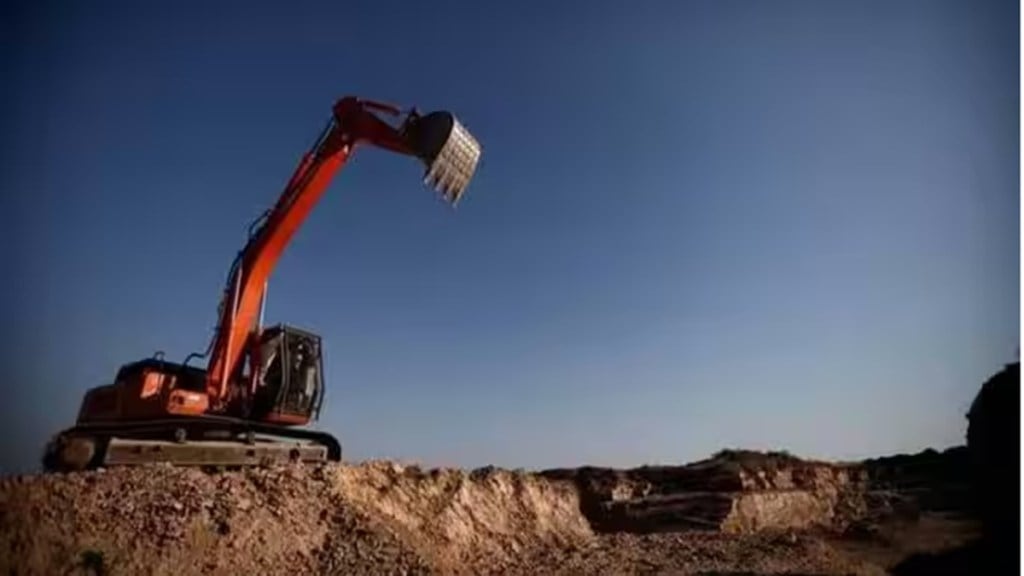By Rajesh Chadha, Ganesh Sivamani and Karthik Bansal
India’s mining sector faces several challenges that impede its sustainable growth. One crucial obstacle is the lack of adequate mineral exploration. India remains import-dependent for many minerals, particularly critical ones. On June 28, the ministry of mines announced a list of 30 critical minerals essential for the growth of many sectors in India. These are required to manufacture green technologies such as wind turbines, solar panels, batteries, and electric vehicles. Incentivising domestic exploration of these critical minerals is crucial for India’s long-term goal of reaching net-zero by 2070.
India’s economic liberalisation in the early 1990s and the National Mineral Policy of 1993 paved the way for private investment for mineral exploration in India from the world’s leading exploration companies like De Beers, Rio Tinto, Anglo American Group, and many others. Private companies could apply for prospecting and reconnaissance exploration permits in India under the First Come First Serve (FCFS) system, granting them the right to explore and subsequently mine or sell any discovered minerals.
In 2011, the report of a working group under the Twelfth Five-Year Plan highlighted the importance of the FCFS system towards encouraging private investment in mineral exploration. The report also stated that auctioning already-explored mineral blocks would discourage private investment. The Supreme Court of India, in its 2012 judgement, held that the FCFS method of natural resource allocation was susceptible to manipulation, favouritism and misuse. Later that year, in the case of Natural Resource Allocation, the SC stated that auctioning as a system of natural resources allocation, while profitable, should not be the only norm. The court further discussed how in cases of mineral exploration, where there are high risks and huge investments, auctions would deter private investment. The 2015 Amendment to the Mines and Minerals (Development and Regulation) Act, 1957 (MMDR Act) replaced the FCFS basis of mineral allocation with auctions.
Post-2015, India saw a steep decline in mineral exploration activities, and many leading global exploration companies withdrew their investments from India. To enhance exploration activities, the Non-Exclusive Reconnaissance Permit (NERP) was introduced, which was later discontinued in 2021 with no takers. The NERP was ineffective as it did not confer any mining rights on exploration companies upon discovering mineral resources. The National Mineral Exploration Trust (NMET) was established in 2015 to provide incentives for expediting investment in exploration by public and private entities. The NMET is funded through a cess on operating mines and has approved the financing of 295 exploration projects, of which only three projects are being carried out by private exploration agencies. The total funding of all projects under NMET is approximately Rs 1,896 crore. About 90% of this has been allocated to projects by the Geological Survey of India (GSI). Private exploration agencies have utilised less than 1% of the NMET expenditure. Thus, the NMET has not succeeded in increasing the participation of private exploration companies.
In February, the mines ministry issued a notice for public consultation on the introduction of Exploration Licences (ELs) to incentivise the exploration of deep-seated and critical minerals. The proposed EL would be granted through auctioning an area suggested by any person to the state government. Eligible explorers would bid on their desired percentage share of the auction premium payable by an eventual Mining Leaseholder to the state (contingent on a successful discovery and subsequent auction), with the lowest bid winning the EL auction. EL holders will receive revenue for their work only after a successfully discovered mine is auctioned and operationalised. The process may take years or may not even materialise. For example, the Ghorabhurani-Sagasahi Iron Ore Mine was auctioned in 2016 and only started production in late 2021. The proposed regime may need to offer more incentives for private explorers.
Under the present regime, private companies can also conduct some exploration activities upon being granted a Composite Licence (CL). CLs are granted for areas with inadequate evidence of the existence of the mineral and allow the leaseholder to undertake both exploration and mining operations. Instead of introducing a new licence for exploration, the existing CL regime should be tweaked to give impetus to the reconnaissance of deep-seated mineral exploration. For greenfield blocks with no knowledge of the minerals’ presence: (i) eligible parties should bid on the share of the value of the minerals that they would pay to the state government on successful discovery and mining; (ii) the proposed CL should expand its scope to allow reconnaissance and thus have a greater maximum area grantable to exploration companies; (iii) the reconnaissance component of the CL may be granted for an area up to 1000 sq km, with safeguards to prevent companies from not conducting exploration activities within a specified time; the leaseholders could be required provide periodic reports on the evidence of work done; and (iv) after 3 years of reconnaissance, the leaseholder should relinquish 75% of the original area. These recommendations would allow exploration companies to sell or mine any resources they discover.
These recommendations address the government’s concerns about only granting mineral concessions through auctions. The needs of exploration companies are also met, as they would have the right to mine their discovered resources. Developing a globally competitive exploration industry will enable the country to be self-sufficient for the raw materials it needs for manufacturing, green transition, etc.
Writers are respectively, senior fellow, research associate, and research analyst, Centre for Social and Economic Progress. Views are personal


